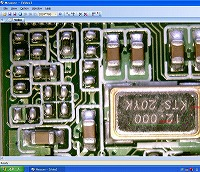■ Regarding Field of View
The field of view is determined by the angle of view listed in the catalog. However, even with the same field of view, it becomes narrower as the diameter becomes smaller.
<Example>
When comparing φ0.7 and φ2.7, the field of view angle is almost the same.
(φ0.7 has 70°, and φ2.7 has 75°.)
| これをφ0.7とすると |  |
| φ2.7 would have this thickness. | 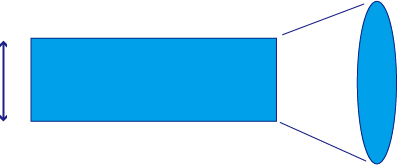 |
■ Regarding Resolution
For borescopes (rigid endoscopes), there are both rod lens type and fiber type. In our case, those with a diameter of φ2.7mm or larger are rod lens type, while those thinner are fiber type. Fiber type has lower resolution compared to rod lens type. When comparing fiber types with each other, resolution decreases as the diameter becomes smaller.
<Example> Observing an M4 screw hole.
φ2.7mm, rod lens type.
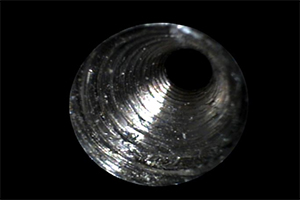
φ1.6mm, fiber type.
Due to the structure of bundling fibers, lines of the honeycomb structure of the fibers occur. In our case, we slightly reduce the contrast to eliminate those lines.
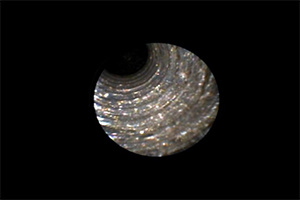
φ0.7mm, fiber type.
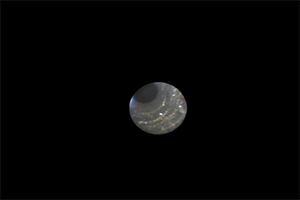
Even if you feel that the image is coarse with an endoscope type that has a camera built into the cable tip, using a borescope with a high-sensitivity, wide dynamic range video camera (as an example system) will improve clarity. Furthermore, depending on the camera’s functionality, you can reduce overexposure and shadows. (Resolution remains unchanged, but with a larger sensor size, brightness and clarity increase.)
We introduce borescope systems on shodensha’s product website. Please take a look. You can find it here

